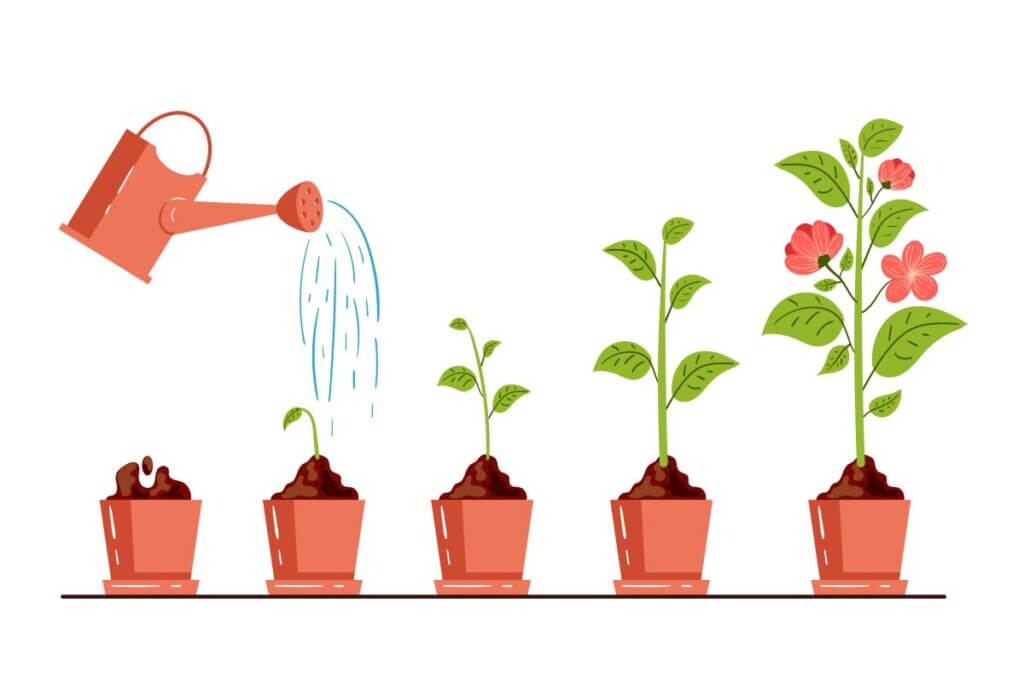For many years, I was an advisor for the Junior Achievement Company Program, which was an after-school economic education course. Throughout this time, I met and mentored many high school students on the cusp of adulthood. Over a three month period a group of 20 – 30 high school students met weekly to run a company of their creation. The students elected officers, created a product to sell and managed the company’s financials. For these student officers it was often their first entry into the world of leading others, which provided the advisors plenty of opportunity to develop the confidence of those emerging into a leadership role.
A new leader hesitates
I recall one year when a quiet sixteen year old girl named “Janice” was elected to be the Vice President of Production. Being the VP of Production meant procuring raw goods from a supplier to make a product, so one day after school I met Janice and her mom at a wholesaler of craft goods. We needed to select a couple of different colored fabrics to bring to the JA meeting that night.
As we stood before the many rows of fabric with the vast color choices, it was easy to see how someone could become overwhelmed. And indeed, I sensed that Janice nearing that feeling. I also understood that as a teen, peer pressure was playing a key role in Janice’s thought process: will they think I’m a dork if I pick out the wrong color?
This was Janice’s first time in role of leadership; it was important for her to succeed in this task. What was a fairly easy decision for an adult was much more challenging for this young woman. So I started by saying, “Janice, let’s narrow down our choices – what three or four choices do you think will look best for your company’s product?” I noticed a pattern in her decision-making: she would slide a sideways glance towards mother, as if seeking permission. After a bit of vacillating, Janice made a few choices.
“Great!” I encouraged. “Now we just need to pick two color choices. What do you think?”
A bit of encouragement goes a long way
And this is where it gets interesting.
“Um, maybe the blue and the green?” Janice hesitated and looked at her mom for confirmation. “You know, Janice,” I offered, “You are the VP of Production. Your peers voted you into this position because they trusted your ability to make decisions. If you think the blue and green are the best choices, then that’s how we’ll do it.”
I watched in amazement as confidence bloomed right then and there on Janice’s face. It was as if nobody had ever told her she was capable of making good decisions. “OK,” she said, her new-found self-assurance picking up speed by the minute. “Let’s do blue and green!”
Janice went on to excel as the VP of Production. Whenever she had her moments of doubt, my fellow advisors and I would be sure to bolster her confidence by praising her decision-making skills.
[Related: Leading the Over Self-Critical Employee]
Why nurturing an emerging leader’s confidence is important
When this encounter occurred, I had been a supervisor for nearly eight years, but this was the first time I had the privilege of coaching a person into her first official leadership role. Amidst my own journey of leadership development, this experience marked a shift—from refining my own skills to fostering someone else’s potential.
Up until this point, I had been developing my leadership skills; now it was time to nurture someone else’s. Little did I know that this shift would unveil a profound truth about leadership: it’s not just about personal prowess but about instilling confidence in others. Janice’s journey became a testament to the idea that leadership is as much about empowering others as it is about individual competence.
The experience taught me something vital about developing emerging leaders: in order for someone to lead, they first have to see themselves capable of doing so. Janice’s initial uncertainty revealed the delicate balance between skill development and self-perception. It became clear that a crucial part of leadership mentoring involves guiding individuals to recognize their own leadership potential.
There are people who can boldly stake a claim to leadership without any assistance – and off they go into the fray. However, the majority may require the supportive push that acknowledges their capabilities, as was the case with Janice navigating the fabric choices for her company.
More often, though, people need the nudge that says, “Yes, you are a leader and you will make good choices.” Janice’s moment of hesitation in selecting fabric colors underlines the common need for reassurance. It became evident that leadership development involves not just honing decision-making skills but instilling the conviction that one’s choices matter and contribute to the success of the team.
I’m very grateful to Janice for helping me make that discovery. Janice’s journey, from uncertainty to confidence, became a reciprocal learning experience. Gratitude extends beyond her personal success to the realization that nurturing emerging leaders is a journey of mutual growth—one where mentor and mentee both contribute to the development of leadership skills and confidence in equal measure.

Leave a Reply